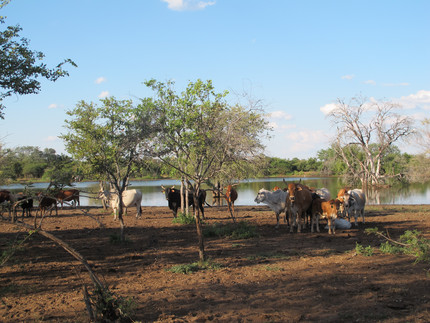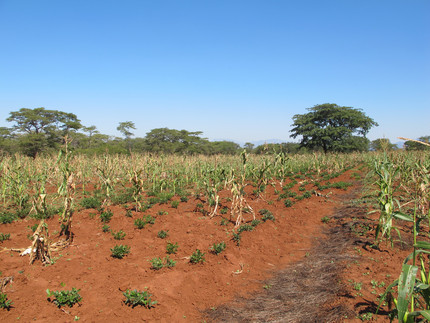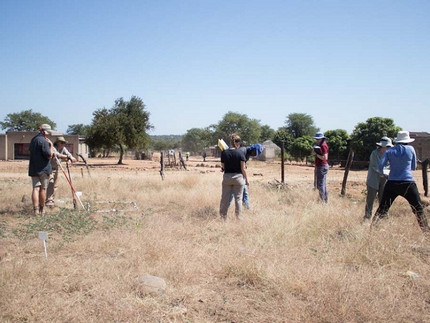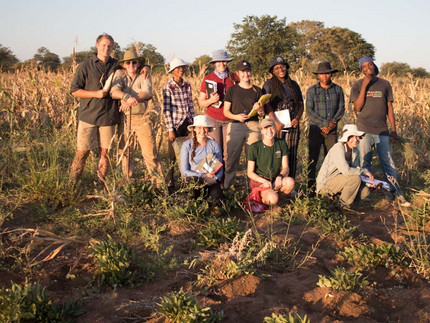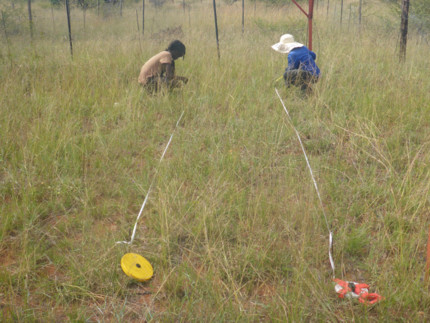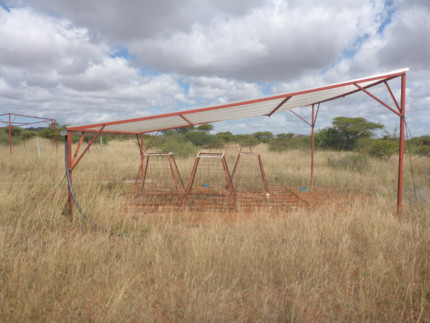SALLnet: South African Limpopo Landscape Network
SALLnet is one out of nine collaborative projects of the new German–South African research collaboration on global change under the SPACES II program, funded by the Federal Ministry of Education and Research (BMBF, runtime: 08/2018 – 07/2021).
Limpopo is a province in northern South Africa and a rural landscape within the savannah biome. Within this province, there is a strong gradient of annual rainfall, and agriculture in Limpopo is versatile. Rangelands for livestock grazing and small-scale crop fields play an important role for people´s livelihoods and the local economy, as well as large-scale orchards with fruits such as macadamia.
Official website: SALLnet
Mission
The primary aim of the project is to enhance future food security for the rural population in Limpopo province. We want to know how global change, especially increasing drought, affects ecosystem functions, multi-functionality and resilience of the landscape ecosystems. These in turn have a profound influence on the livelihood of people living in the study area.
The basic approaches are:
- Groundwork on testing innovative management practices for arable lands, rangelands and tree orchards, and characterizing farming systems with regard to socio-economic factors
- Developing and testing of new tools for modelling vegetation, food and forage crops, tree crops and farm type dynamics and upscaling field research results in time and space
- Developing integrative tools and modelling platforms for interactive scenario analysis and joint learning with stakeholders on sustainable land use options
Our subproject is dealing with vegetation ecology with a focus on rangelands. Our activities include the DroughtAct Experiment and REFA (Rapid Ecosystem Funciton Assessment) field survey and research on seasonal diet dynamics of cattle .
Opportunities
You are welcome to inquire about possibilities for PhD or post-doctoral positions. Please check vacant positions or contact Prof. A. Linstädter (linstaedteruuni-potsdampde) directly. Should you seek opportunities for a Bachelor or Master thesis, please check our institutional list of topics for theses Topics for Theses .
Rapid Ecosystem Function Assessment (REFA)
Ecosystem functions include all processes and interactions among species leading to the ecosystem services, e.g. productivity, extent of herbivory, pollination and seed dispersal. Ecosystem functions make an ecosystem running and are the requirements for ecosystem services such as forage and food production. Since livelihoods highly depend on these, understanding the underlying ecosystem functions is essential to forecast changes due to environmental changes such as drought or increasing grazing.
Generally, there is a lack of empirical data quantifying different ecosystem functions at the same time. Studies reporting responses of various ecosystems to environmental degradation and changes traditionally focus on species composition and abundances, thereby neglecting the interrelationships between species. Such relationships can be positive (e.g. mutualistic species interactions such as pollination) or negative (e.g. predation), and the balance between all interactions will determine the stability of an ecosystem and into which state it moves should environmental conditions change.
Aims
| Quantifying the most significant ecosystem functions with a suit of simple and easy-to-use field methods. The advantage of such an approach is that students and local people can be involved for data recording and that several aspects of ecosystem functions can be scored within the same area and within a short time frame.
|
Approach
| Various methods such as insect traps, soil analyses, biomass determination are used to quantify ecosystem functions such as soil fertility, primary and secondary productivity, pollination, herbivory.
|
Expected Outcomes
| Understanding the variability and interrelations of ecosystem functions in natural and anthropogenic habitats with consideration of the socio-economic status of the land users.
|
Persons Involved | PI Prof. Dr. Anja Linstädter, University of Potsdam Dr. Frances Siebert, North-West University, Potchefstroom Prof. Dr. Stefan Foord, University of Venda, Thohoyandou Prof. Catrin Westphal, University of Göttingen Prof. Dr. Wayne Twine, School of Animal, Plant and Environmental Science, University of the Witwatersrand Dipl.-ing. agr. Kai Behn, University of Bonn Prof. Dr. Ingo Grass Prof. Dr. Jan-Henning Feil Prof. Dr. Johnnie van den Berg Dr. Ewald Weber
|
Cooperation partners
| University of Venda, Thohoyandou, South Africa North-West University, Potchefstroom, South Africa School of Animal, Plant and Environmental Science, University of the Witwatersrand, South Africa University of Göttingen, Germany University of Bonn, Germany
|
Rangeland and Drought: The DroughtAct Experiment
Rangeland is an essential part of the rural Limpopo province and is used by farmers for livestock grazing. The rangeland comprises of grassland interspersed with a number of tree species. Livestock depends on annual growth of grasses and forbs, which is influenced by rainfall patterns. The central question of this study is what determines the rangeland’s stability with regard to productivity in the face of increasing drought.
Experimental plots have been set up at the experimental farm of the University of Limpopo, South Africa. By a combination of rainfall and grazing treatments the response of the vegetation is investigated. The treatments (ambient conditions vs. reduced rainfall, ambient grazing intensity vs. changed grazing intensity) simulates realistic climate conditions under future climate change regimes in conjunction with potential management interventions.
The DroughtAct experiment is also part of an international network of coordinated drought experiments, the International Drought Experiment (IDE, see ). Initiated by Drought-Net , this global network aims at assessing terrestrial ecosystem sensitivity to drought.
Aims
| To understand the interplay of changes in rainfall and grazing intensity on the productivity of rangeland.
|
Approach
| A combination of plots with grazing-exclosures and plots with rainout shelters are used to investigate the response of vegetation, e.g. biomass production, species composition and leaf quality.
|
Expected Outcomes
| A better understanding of the impacts of combined drought and grazing and of recovery dynamics after drought. Based on this, we can adress questions regarding the ecosystem stability and regarding management options to mitigate and avoid degradation.
|
Persons Involved | PI Prof. Dr. Anja Linstädter Prof. Kingsley Ayisi
PhD Vincent Mokoka Dr. Lawrence Munjonji
|
Cooperation partners
| Risk and Vulnerability Assessment Centre, University of Limpopo Experimental Farm Syferkuil, School of Science and Agriculture, University of Limpopo University of Venda, Thohoyandou, South Africa
|
Outreach | Pfeiffer, M., Langan, L., Linstädter, A., Martens, C., Gaillard, C., Ruppert, J., Higgins, S., Mudongo, E. and Scheiter, S. (2019). Grazing and aridity reduce perennial grass abundance in semi-arid rangelands – Insights from a trait-based dynamic vegetation model. Ecological Modelling, 395, pp. 11–22
Munjonji, L., Ayisi, K. K., Mudongo, E. I., Mafeo, T. P., Behn, K., Mokoka, M. V., Linstädter, A. (2020): Disentangling Drought and Grazing Effects on Soil Carbon Stocks and CO2 Fluxes in a Semi-Arid African Savanna. Frontiers in Environmental Science 8, 590665, https://doi.org/10.3389/fenvs.2020.590665
|

